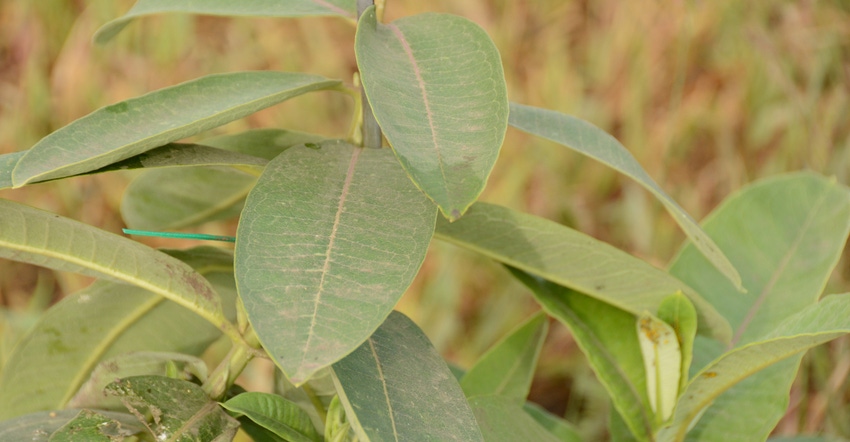
A broad-based industry coalition launched a new monarch butterfly effort during the 2018 Commodity Classic: Farmers for Monarchs. The coalition includes farmers, conservation groups, agricultural corporations and others.
“The monarch butterfly is an iconic species,” says Wayne Fredericks, an Osage, Iowa, farmer and American Soybean Association board member. “Today’s butterflies face threats including loss of habitat, parasites and declining winter habitat in Mexico. This is calls for action.”
Fredericks adds that while monarchs are spectacular and beautiful, they’re also necessary as pollinators.
“We need them to thrive as much as they need our help to do so,” he says, calling the new public-private sponsorship an effort to benefit biodiversity. The overall goal of Farmers for Monarchs is to create a complex patchwork of habitat across the entire migration route from Canada to Mexico.
“That will require an amazing amount of cooperation among farmers, governments, city dwellers and more,” he adds.
For farmers, that means embracing a long-held nemesis: milkweed. Monarchs cannot survive without milkweed, laying eggs on the underside of leaves.
Every fall, monarchs migrate as far as 3,000 miles, from the Upper Midwest to Mexico, for the winter. In the spring, they return, laying eggs on milkweed plants along the migration route. Milkweed, as it turns out, is the only source of food they’ll eat.
Farmers for milkweeds?
Chris Novak, chief executive officer of the National Corn Growers Association, says he understands farmers’ reluctance to embrace milkweed.
“When I was a kid, I hated pulling milkweeds the most, and we knew at the time it was a noxious weed. We watched the thousands of seeds that came from a milkweed pod,” Novak says. “At that point, we weren’t thinking about monarch butterflies!”
But he says as science has improved, agriculture has taken a closer look at habitat for wildlife and recognized that people need to take steps to help. Currently, the U.S. Fish and Wildlife Service is considering a petition to list the monarch as a threatened or endangered species, and plans to deliver a decision in June 2019.
“The farmers I work with are independent folks, and if they can get to the point where they don’t have government regulations coming down on them, they certainly prefer that,” Novak says.
He calls monarch habitat protection a “new part of the system farmers have to manage.” He and the rest of the Farmers for Monarchs coalition want to encourage farmers to take areas that aren’t part of productive working lands — fencerows, ditches, pivot corners — and plant habitats there.
“That’s at the heart of this effort,” Novak explains. “What we do first and foremost voluntarily gives us an opportunity to experiment and find what works best.”
If voluntary actions aren’t adequate, and U.S. Fish and Wildlife does list monarchs as endangered, farmers will be prepared and will have identified tools and pathways they can use.
“We believe we can help shape rules and regulations,” he says. “We want to be a part of the debate in shaping any regulations that may be necessary down the road.”
Fredericks says awareness is the key today. He planted pollinator plots on his farm in 2014, when he began generating profitability maps on his operation. When he discovered parts of fields that were very seldom profitable, or nooks and crannies that didn’t fit well, he enrolled them in the Conservation Reserve Program and chose to put pollinator habitats on them.
“That was our first introduction to a cooperative program via the federal government that improved the profitability of our farm and improved habitat,” Fredericks says. Plus, it adds beauty to the farm.
Partners in Farmers for Monarchs include: American Farm Bureau Federation, American Soybean Association, BASF, Bayer, The Bee & Butterfly Habitat Fund, Dow AgroSciences/DuPont/Pioneer, Monarch Watch, Monsanto, National Association of Wheat Growers, National Corn Growers Association, Saint Louis Zoo, Sand County Foundation and Syngenta.
About the Author(s)
You May Also Like






